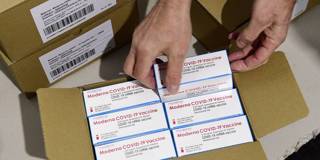
Industrial Planning Did Not Deliver the COVID Vaccines
Advocates of active government regard the development of effective COVID-19 vaccines as a case of successful “industrial planning.” But the vaccines are a triumph not of state direction but of “innovism” – a private-sector-led, trial-and-error search for good things for which consumers are willing to pay.
CHICAGO/MILAN – As COVID-19 vaccines are rolled out, only some parts of the world can breathe a sigh of relief. In most of the world, scarce or nonexistent doses recall the product shortages in communist Eastern Europe in the 1980s. If we allocated food in the statist, non-commercial way that the vaccines are being distributed, we would all lose a good deal of weight.